Perpetuating gender inequity through uneven reporting
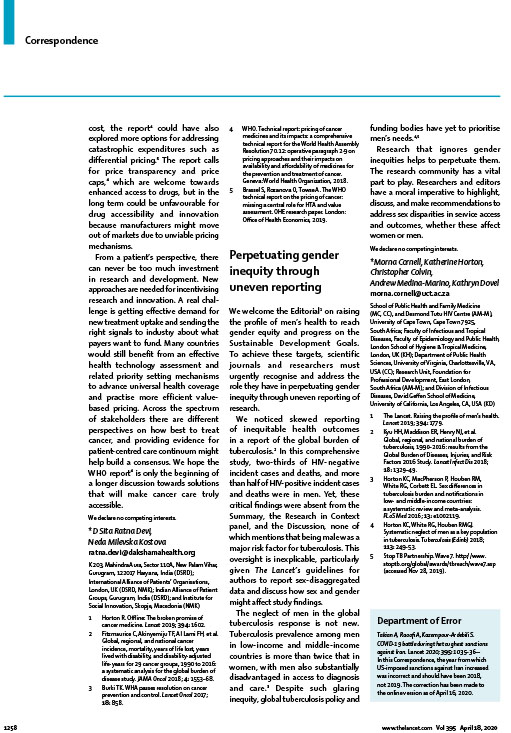
We welcome the Editorial on raising the profile of men’s health to reach gender equity and progress on the Sustainable Development Goals. To achieve these targets, scientific journals and researchers must urgently recognise and address the role they have in perpetuating gender inequity through uneven reporting of research.
Moving beyond gender stereotypes
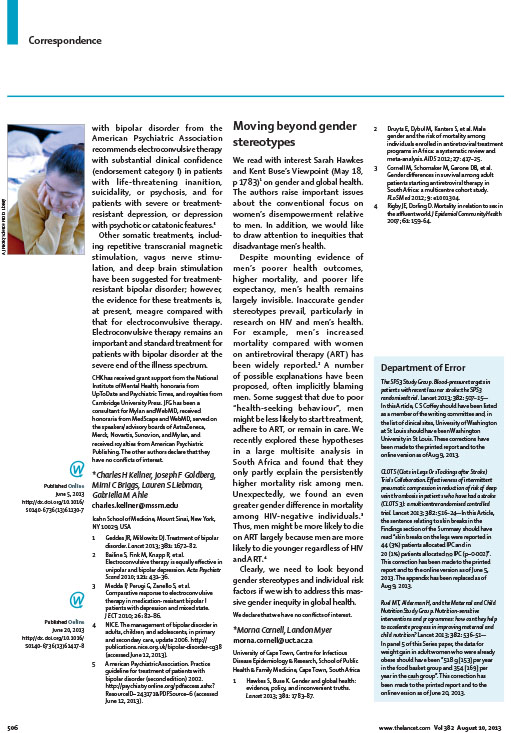
We read with interest Sarah Hawkes and Kent Buse’s Viewpoint (May 18, p 1783) on gender and global health. The authors raise important issues about the conventional focus on women’s disempowerment relative to men. In addition, we would like to draw attention to inequities that disadvantage men’s health.
Men and antiretroviral therapy in Africa: our blind spot
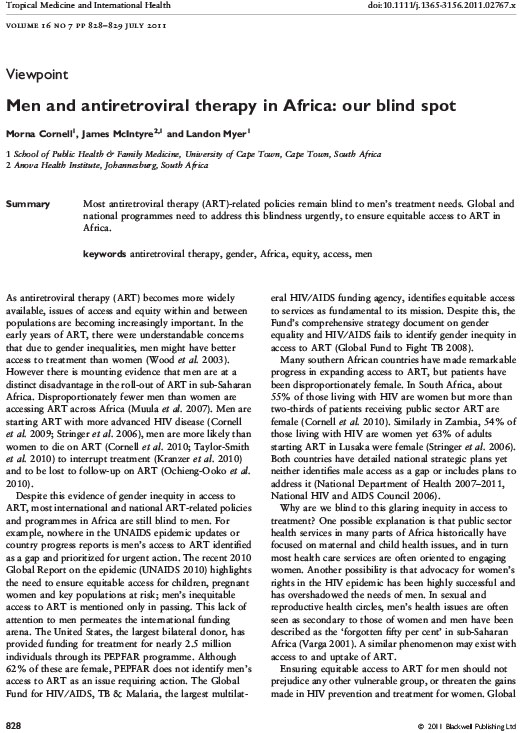
Most antiretroviral therapy (ART)-related policies remain blind to men’s treatment needs. Global and national programmes need to address this blindness urgently, to ensure equitable access to ART in Africa.
HIV services in sub-Saharan Africa: the greatest gap is men
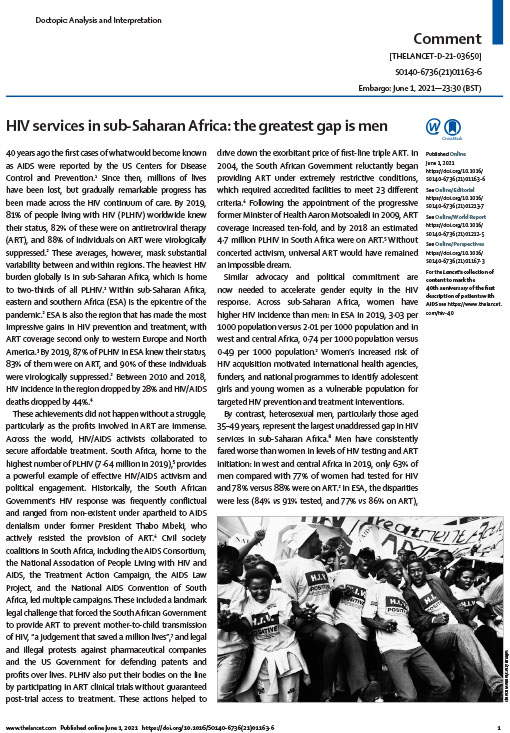
40 years ago the first cases of what would become known as AIDS were reported by the US Centers for Disease Control and Prevention. Since then, millions of lives have been lost, but gradually remarkable progress has been made across the HIV continuum of care. By 2019, 81% of people living with HIV (PLHIV) worldwide knew […]
Gender inequality: Bad for men’s health
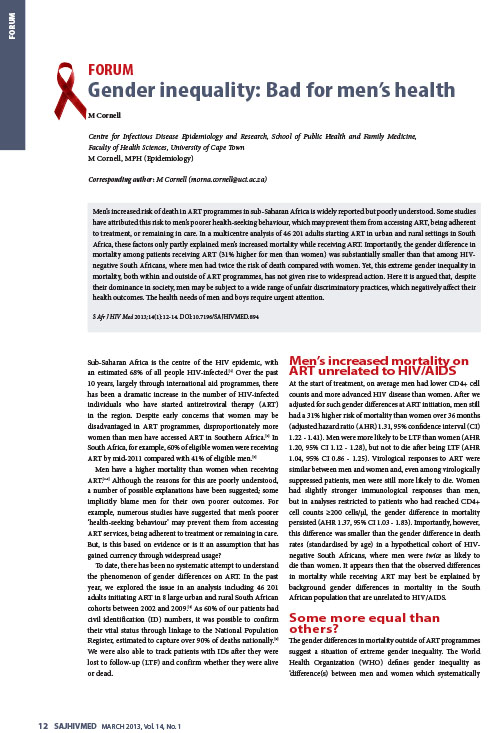
Men’s increased risk of death in ART programmes in sub-Saharan Africa is widely reported but poorly understood. Some studies have attributed this risk to men’s poorer health-seeking behaviour, which may prevent them from accessing ART, being adherent to treatment, or remaining in care. In a multicentre analysis of 46 201 adults starting ART in urban […]
Public health blindness towards men in HIV programmes in Africa
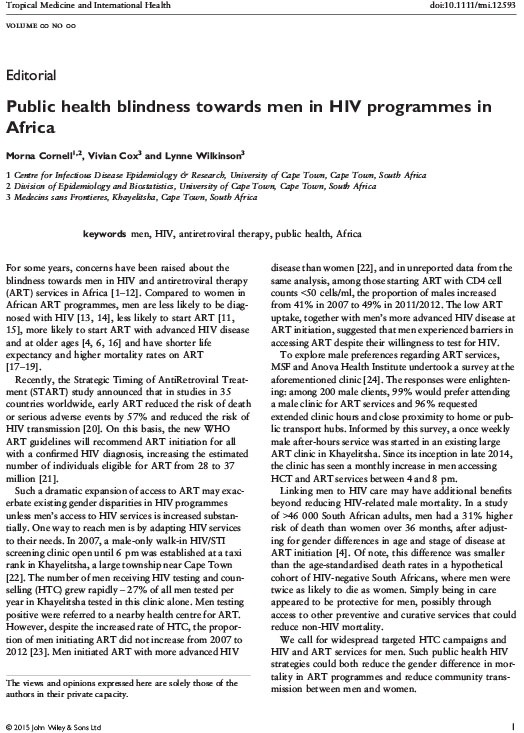
For some years, concerns have been raised about the blindness towards men in HIV and antiretroviral therapy (ART) services in Africa. Compared to women in African ART programmes, men are less likely to be diagnosed with HIV, less likely to start ART, more likely to start ART with advanced HIV disease and at older ages […]
Gender and the Use of Antiretroviral Treatment in Resource-Constrained Settings: Findings from a Multicenter Collaboration

Aims: To compare the gender distribution of HIV-infected adults receiving highly active antiretroviral treatment (HAART) in resource-constrained settings with estimates of the gender distribution of HIV infection; to describe the clinical characteristics of women and men receiving HAART. Methods: The Antiretroviral Therapy in Lower-Income Countries, ART-LINC Collaboration is a network of clinics providing HAART in Africa, Latin […]
Mass HIV Treatment and Sex Disparities in Life Expectancy: Demographic Surveillance in Rural South Africa
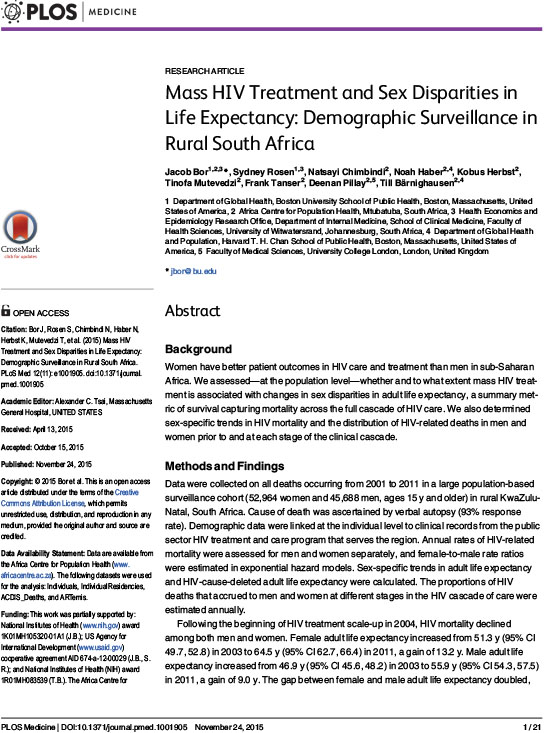
Background Women have better patient outcomes in HIV care and treatment than men in sub-Saharan Africa. We assessed—at the population level—whether and to what extent mass HIV treatment is associated with changes in sex disparities in adult life expectancy, a summary metric of survival capturing mortality across the full cascade of HIV care. We also […]
Who starts antiretroviral therapy in Durban, South Africa?… not everyone who should
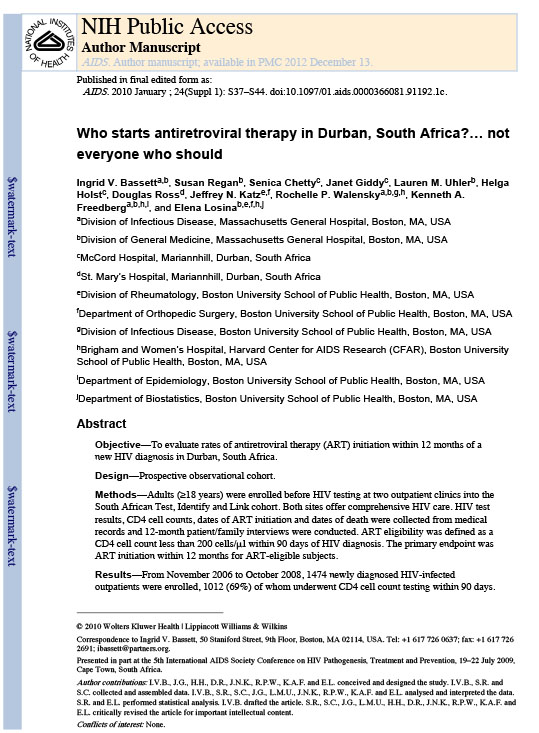
Objective To evaluate rates of antiretroviral therapy (ART) initiation within 12 months of a new HIV diagnosis in Durban, South Africa. Design Prospective observational cohort. Methods Adults (≥18 years) were enrolled before HIV testing at two outpatient clinics into the South African Test, Identify and Link cohort. Both sites offer comprehensive HIV care. HIV test […]
Are there differences in disease progression and mortality among male and female HIV patients on antiretroviral therapy? A meta-analysis of observational cohorts
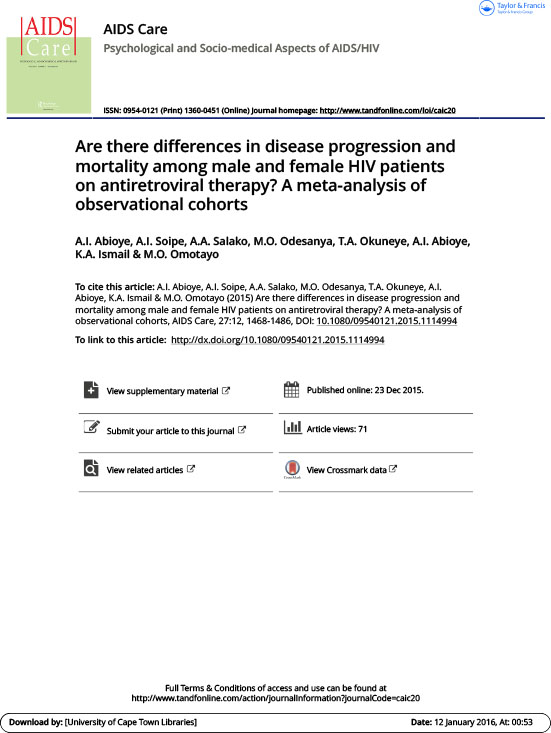
Studies examining the sex differences in morbidity and mortality among HIV/AIDS patients have yielded inconsistent results. We conducted a meta-analysis of sex differences in disease progression and mortality among HIV/AIDS patients. Medical literature databases from inception to August 2014 were searched for published observational studies assessing sex differences in immunologic and virologic response, disease progression […]


